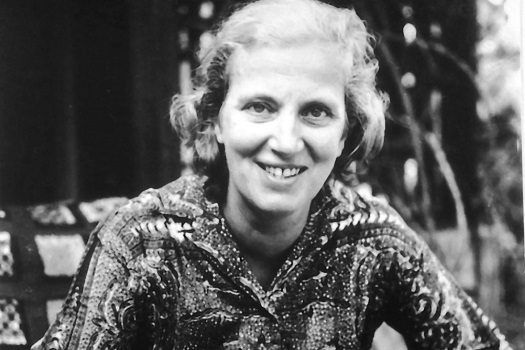Dorothy Hodgkin
Episode #5 of the course Ten significant women in science by James Wareing
Today we shall learn about the only British woman to have received the Nobel Prize for chemistry. Not only that but one of her pupils was to become the future British Prime-Minister, Margaret Thatcher. Dorothy Hodgkin (born Dorothy Crowfoot) was born in 1919 in Cairo, Egypt. Her parents were British and her father was working at the time for the Egyptian Education Service. She moved to England during the war and later went to Oxford to study chemistry. However, her career in chemistry was almost over before it started, as she developed a keen interest in archaeology, taking up courses at university. It was to the benefit of chemistry that she set her archaeological interests aside as she started a career that would produce significant discoveries.
What Did She Do?
In the 1940s she established her reputation after discovering the structure of penicillin, a task that had been challenging many of the world’s finest scientists. Her method was unconventional as she chose to use the fledgling technique of x-ray analysis. At Hogkin’s method and her hypothesis that penicillin would be made of three carbon and one nitrogen atom, one scientist remarked “If that’s the formula of penicillin, I’ll give up chemistry and grow mushrooms.” Hodgkin, however, was right and her work accelerated the understanding of penicillin and its medicinal potential.
The work for which she is most renowned was her establishing of the structure of vitamin B12, vital in curing pernicious anemia, in 1954 after six years of work. This would later be a significant factor in her receiving a Nobel Prize. She started work on insulin in 1934, trying to establish the structure of the molecule. However, the molecule was too large at the time to be analyzed. It was not until 1969 that she was able to complete the project she had started 35 years earlier. Her discovery was to prove yet again life-saving as it was very beneficial for diabetics for whom a new, more effective treatment could be worked on, guided by Hodgkin’s work.
Legacy and Challenges Faced as a Woman
She was fortunate to work with J.D. Bernal, a chemist at Cambridge University who was one of a few scientists at the time who promoted equal opportunities for women. It was he who gave her, and many other women, the opportunity to work on crystallography. However, negative attitudes towards women in science still prevailed despite her success.
She was awarded the Nobel Prize in Chemistry in 1964 for what the institution described as “her determinations by X-ray techniques of the structures of important biochemical substances.” Indicative of the times in which she was working as a female scientist, on the reception of her prize was written the following headline in the Daily Mail “Grandmother wins Nobel Prize.” It was not for her science that the paper chose to recognize her, but her familial role as a grandmother, seemingly oxymoronic to simultaneously being a scientist. She was also the second woman, after Florence Nightingale to ever receive the Order of Merit in 1965.
Not content with her achievement in science, Hodgkin was also a passionate campaigner for peace in a time of threatening world conflict. She brought together the scientific community in the organizing of the International Union of Crystallography, insisting that Soviet and Chinese scientists be allowed to attend. She was also—and still is—the longest-serving president of the Pugwash Conference, an international organization designed to reduce world conflicts.
Tomorrow we shall learn about Rosalind Franklin and how she contributed to discoveries on something central to us all, DNA.
Recommended book
Dorothy Crowfoot Hodgkin: Patterns, Proteins and Peace: A Life in Science by Georgina Ferry
Share with friends


